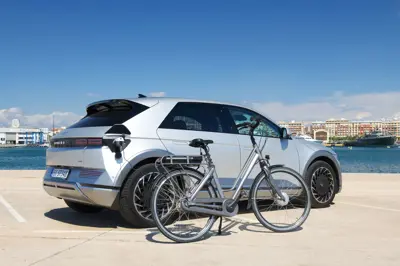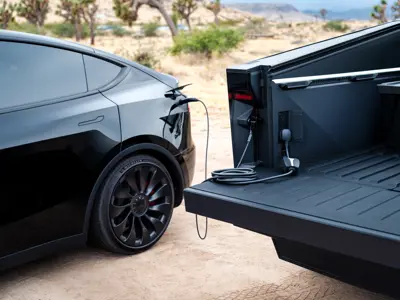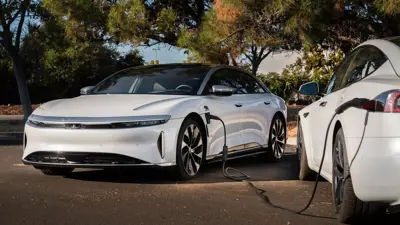Bidirectional Charging
Bidirectional charging allows EVs to not only receive electricity from the grid or a charging station but also send it back to the grid or a home.
Bidirectional charging enables EVs to act as backup power sources, grid stabilizers, or renewable energy integrators.
In this article, we will cover:
- The benefits and challenges of bidirectional charging
- The different types of bidirectional charging: V2G, V2H, and V2L
- The different types of bidirectional chargers and connectors
- The installation and maintenance of bidirectional chargers
- The cost and efficiency of bidirectional charging
- Future trends and developments in bidirectional charging
By the end of this article, you will understand how bidirectional charging works and how it can benefit you as an EV owner and grid user. You will also learn how to choose the best bidirectional charger for your EV model, driving habits, and budget.
The Benefits and Challenges of Bidirectional Charging
Bidirectional charging offers many benefits for EV owners, grid operators, and society:
Benefits
Backup Power
Bidirectional charging can provide backup power to your home or business during a blackout or emergency, powering essential appliances and devices until the grid is restored.
Grid Services
Bidirectional charging can offer grid services such as frequency regulation, voltage control, peak shaving, demand response, and ancillary services, helping balance electricity supply and demand and preventing power outages or fluctuations.
Renewable Energy Integration
Bidirectional charging can store excess renewable energy when it is abundant and release it when it is scarce, increasing the share and value of renewable energy on the grid and reducing greenhouse gas emissions.
Challenges
Compatibility
Not all EVs and chargers support bidirectional charging. You need an EV model that supports it, a compatible charger, and a connector that can communicate bidirectional signals. A smart meter and smart grid are also required.
Cost
Bidirectional charging may require additional hardware and software, increasing the cost of your EV and charger. Installation, maintenance, and subscription fees for bidirectional services may also apply.
Degradation
Frequent and deep cycles of charging and discharging can increase the degradation of your EV battery, reducing its lifespan and performance. Monitoring battery health and following best practices is essential.
The Different Types of Bidirectional Charging
Bidirectional charging can be classified into three main types:
V2G (Vehicle-to-Grid)
V2G allows an EV to send electricity back to the grid, providing services such as frequency regulation, voltage control, peak shaving, demand response, and ancillary services. It can also enable peer-to-peer energy trading between EV owners and other grid users.
V2H (Vehicle-to-Home)
V2H allows an EV to send electricity back to a home, providing backup power during a blackout or emergency and enabling self-consumption of renewable energy generated by a home solar system or battery.
V2L (Vehicle-to-Load)
V2L allows an EV to send electricity to a load, such as a device or appliance. It provides portable power in case of a lack of access to the grid or a charging station and enables power sharing between EVs or other loads.
There are two main methods to draw power:
- From the charge port using a V2L adapter
- From a socket inside the car or in the trunk/frunk/cargo bed
The power that can be drawn from EVs varies from 1 to 11.5 kW, depending on the model and connector used.
The Different Types of Bidirectional Chargers and Connectors
Bidirectional chargers and connectors enable bidirectional charging between an EV and the grid, a home, or a load. They vary by region, standard, and compatibility:
AC Bidirectional Charger
Uses alternating current (AC) to charge and discharge an EV battery. Typically installed in homes or workplaces, connected to the grid or a home solar system. Provides Level 1 or Level 2 charging and discharging. Uses the same connector as unidirectional chargers, such as J1772, Tesla, or Type 2.
DC Bidirectional Charger
Uses direct current (DC) to charge and discharge an EV battery. Typically installed in public places or highways, connected to the grid or a renewable energy source. Provides Level 3 charging and discharging. Uses different connectors than unidirectional chargers, such as CCS or CHAdeMO.
On-board Bidirectional Charger
Integrated into the EV itself, using the EV’s power electronics to convert AC to DC and vice versa. Can use any type of connector to charge and discharge an EV battery, depending on the EV model. Provides Level 1, Level 2, or Level 3 charging and discharging. More convenient and flexible but may be more expensive and complex.
Future Trends and Developments in Bidirectional Charging
Bidirectional charging has the potential to transform the role of EVs in the energy system. Future trends and developments include:
Standardization and Interoperability
Efforts are underway to develop and harmonize standards and protocols for bidirectional charging, enabling seamless and secure communication among different actors and devices. For example, ISO 15118 defines the communication interface between EVs and chargers.
Regulation and Incentives
Policies and regulations are being created and reformed to support bidirectional charging. For example, net metering or feed-in tariffs allow EV owners to sell excess electricity back to the grid or a home at a favorable rate.
Innovation and Integration
New technologies and solutions are being developed to improve the efficiency, reliability, and safety of bidirectional charging. For example, smart meters and smart grids can monitor and manage bidirectional power flow, and advanced battery management systems can optimize bidirectional charging and minimize degradation. New business models and platforms, such as blockchain or artificial intelligence, can enable peer-to-peer energy trading or aggregation with other EVs or loads.





